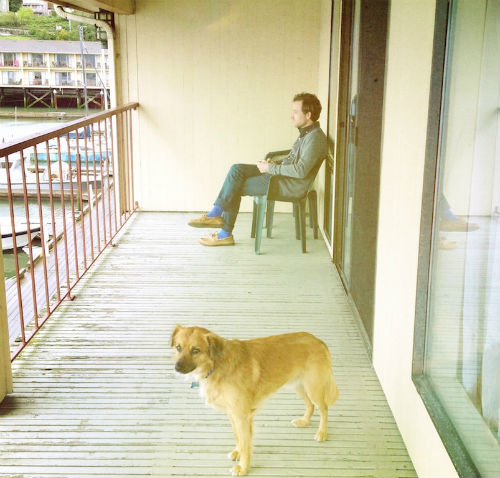
Michael Peck is in a particularly interesting place to monitor literary nostalgia. His debut novel, The Last Orchard in America, is both a classic detective novel (gumshoe in over his head, femme fatale, buried family secrets) and an expert critique of the form that manages to be satisfying at both. (We published an excerpt last month.) Peck also works as a rare book dealer, which provides an entirely different perspective on things. I reached out to him via email to talk about detective stories, the history of noir, and more.
The Last Orchard in America is both a detective story and a kind of meta-narrative about detective stories. What aspect of that came first?
Definitely the tale. This was initially a 2,000-word short story, then the thing became a novella somehow and, soon, a short novel. It’s a mystery to me. Variations saw print via Todd Dills at THE2NDHAND, and the constant reworking (c.f. OCD) led to its final book-shaped version. First, I based LastOrchard on Lucretius’s On the Nature of Things for some weird reason, and felt this a pretty clever angle until I thought about it some more. But one of the prototypes for the novel is The Erasers by Robbe-Grillet, a book I dipped in and out of without completing in order to keep Last Orchard fresh. The idea of “meta-ing” up the book, though, was already a kind of built-in mechanism that just needed to be made palpable; it wends through the best and worst of the genre like an Ouroboros with a gun.
How do you balance the two: telling a story that’s both compelling on its own merits and a functional critique of its genre?
Hardboiled lit and film noir both make a fascinating backstairs study of something that never really was and yet continues to influence. It’s an underground sociology of a self-created culture with no basis in reality, and simultaneously awfully damn entertaining at that. Robert Altman’s The Long Goodbye is a masterpiece of this kind of fusion, strictly following Chandler’s plot while screwing around with it’s tough guy persona and poking fun at Marlowe’s aloofness and cynicism. I wanted to underline that self-referential quality without yammering on about it. I was fortunate to collaborate with Vinson Milligan, whose charcoal illustrations reflect and refract the storyline. Visual art was a big influence; I think that Magritte’s portrait Not to be Reproduced is in some ways the epitome of meta, and I attempted as best I could to replicate its mood.
What first attracted you to detective fiction?
The Big Sleep started it all and the film version of Double Indemnity hit me so hard I wanted to go right out and get a suit and a scowl. The genre’s been itching me ever since. From there it was Hammett and Cain and Thompson and Himes and the rest of the pantheon. With detective fiction the implausibly insane plots are almost secondary to the snappy linguistics, which has more in common with free-style jazz spliced with some kind of fucked up iambic pentameter than actual people talking. It’s this downtrodden musicality, along with the apple pie existentialism, that’s always stuck for me. The hardboiled style has been a second skin for a long while, and Last Orchard is in many a purging of its influence.
Your novel’s title reads like a lament; at what point in the process did you know that this was the route you’d be taking?
It seems to me that the genre, flourishing as it did in the 20s-50s, laments itself, or laments its never-was. Behind all the cynicism and sex appeal and roughness, there’s a real dark angsty sadness there, especially in the post-WWII film noirs. Part of the title came first for me, but I didn’t append “America” till later — noir, spinning off from Expressionism and the Brits’ drawing-room mysteries, is otherwise a whole inventory of Americanisms. To leave that out would be like eliminating the laconic femme or the scene at the end where somebody comes clean about what the hell’s actually going on here. The first draft of Last Orchard was done in the Adirondacks, amidst a landscape of orchards. To me there’s almost nothing creepier than an orchard at night.
Besides writing, you’re also involved in rare book dealing. Is that something that’s had any effect on your fiction?
Absolutely. When I started out bookselling I had a mild obsession with those pulp paperbacks with the beautifully garish designs, published by the likes of Pocket Books and Avon. I chanced on Geoffrey O’Brien’s Hardboiled America, a study of pulp fiction art and its effects on a population that couldn’t seem to get enough violence and luridness. Pulps are like an apocryphal history of rage and the id; some are meticulously artful, others outlandish. I’ve since gone on to rarer stuff, but those paperbacks still pull me in as a writer and bookseller and person.
What are you working on now?
A novella that takes place in 1866, about a utopian community in the high desert of Oregon, an essay about Georges Simenon and a couple other nascent things that I can’s talk about just yet.
Follow Vol. 1 Brooklyn on Twitter, Facebook, Google +, our Tumblr, and sign up for our mailing list.
